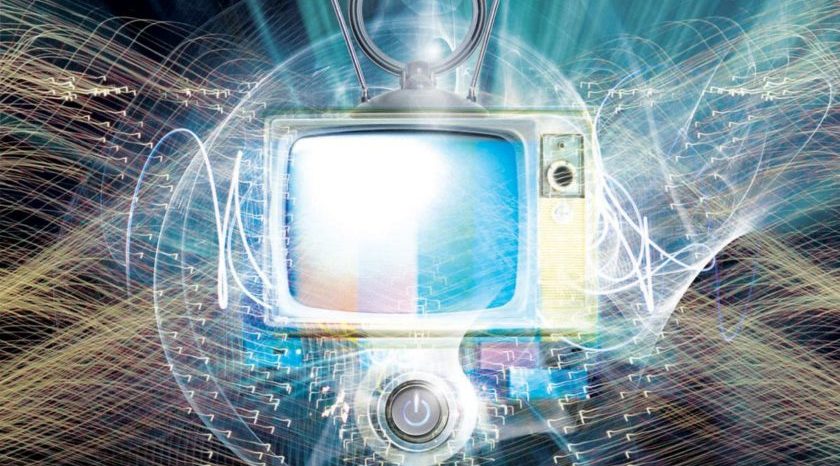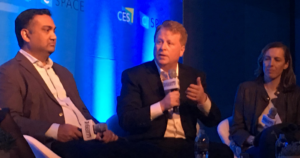M+E Connections

CES 2018: TV Has a Bright Future, But It’s Hard to Predict Future Trends, Execs Say
Story Highlights
LAS VEGAS – TV has a bright future, but it’s downright difficult to predict just what platforms, services and trends will be dominant a few years down the road, according to media and entertainment executives.
That was one big takeaway from “The Future of TV” conference session held Jan. 10 at the 2018 Consumer Electronics Show (CES).
“The definition of what we call television has expanded — to mobile to tablet to live content to on-demand content to short-form, mid-form, long-form,” Erin McPherson, head of content strategy-acquisitions and programming at Verizon, said. That’s one big reason why she agreed with fellow panelist Neal Mohan, chief product officer at YouTube, that TV is experiencing a “golden age” right now, she said.
“What excites me most – and also, I think, keeps me up at night – is that it’s up to all of us in this room and on this stage to kind of disrupt ourselves so that the consumer ends up winning or, as we’ve seen, the consumer just goes and finds what they want” on their own, she said, adding: “We stand to be at the forefront of actually giving consumers content when they want it, how they want it across screens.”
Brian Sullivan, president and COO of Fox Networks Group, has spent most of his career at Sky in Europe, and, there, “we constantly tried to predict what the future of our business was, so that we could prepare for it and be ready for it,” he said. “And we were wrong every time,” he told the conference, adding: “You can’t predict what the future is. Anybody who tries to is fooling themselves. Anybody who thinks they know the future is lying to themselves.” You need to instead prepare for change and “make sure you have as much control over your destiny and whatever you create as possible,” he said.
 PwC found in a recent study that despite the massive amount of content available now via pay-TV and over-the-top services, 62% of respondents indicated that they struggled to find something to watch, moderator Todd Supplee, a partner at PwC, noted.
PwC found in a recent study that despite the massive amount of content available now via pay-TV and over-the-top services, 62% of respondents indicated that they struggled to find something to watch, moderator Todd Supplee, a partner at PwC, noted.
Although Supplee referred to that as “mounting” viewer frustration, Sullivan countered that he didn’t know if that was truly a growing issue. Although “clearly there’s a huge navigation and discovery issue that we have” now, Sullivan conceded, he said “navigation has always been an issue.” TV service providers must just keep experimenting with ways to make it easier for viewers to find content and, ultimately, consumers will communicate what they prefer, he said.
YouTube has found success helping viewers find the content they want to see by using machine learning and artificial intelligence to learn what kind of content each viewer prefers, Mohan said. In fact, “over 70 percent of the watch time on our platform is actually driven by recommendation” now, he said.
Asked at the conclusion of the panel, what the panelists saw as things that had a future or were just fads, they agreed that linear TV had a future (especially when factoring in sports), despite the increasing number of people cutting the cord with their traditional pay-TV services.
They were split on the future of DVRs, although Sullivan noted that people are slow to change their ways. Five years from now, many consumers may still have DVR set-top boxes, even though they may rarely ever even use them anymore by then, he said. The panelists were also spit on the future of augment, mixed and virtual reality.









